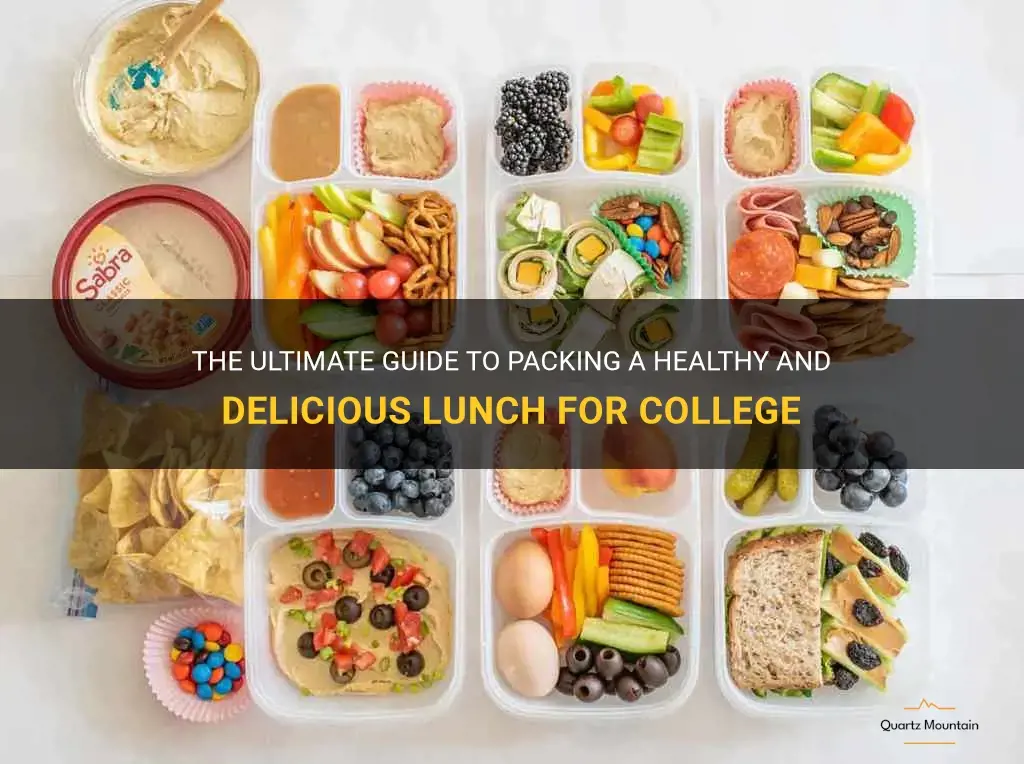
Are you tired of the same old cafeteria food? Do you want to stay healthy and energized during those long days of back-to-back classes? Look no further! The Ultimate Guide to Packing a Healthy and Delicious Lunch for College is here to save the day. Packed with easy-to-follow tips, nutritious recipes, and time-saving tricks, this guide will help you take your lunch game to the next level. Say goodbye to boring sandwiches and hello to mouthwatering salads, wraps, and protein-packed snacks that will keep you fueled and focused throughout the day. Whether you're a seasoned meal prepper or a college newbie, this guide is a must-have resource for anyone looking to maintain a healthy and delicious diet on campus. Get ready to become the envy of your classmates with your drool-worthy lunch creations. Let's dive in!
What You'll Learn
- What are some easy and healthy options for packing lunch to college?
- How can I plan ahead to ensure I have all the necessary ingredients for my packed lunch?
- Are there any specific storage containers or lunchboxes that are recommended for college students?
- Are there any foods that I should avoid packing for lunch to college?
- What are some quick and budget-friendly lunch ideas for college students?

What are some easy and healthy options for packing lunch to college?
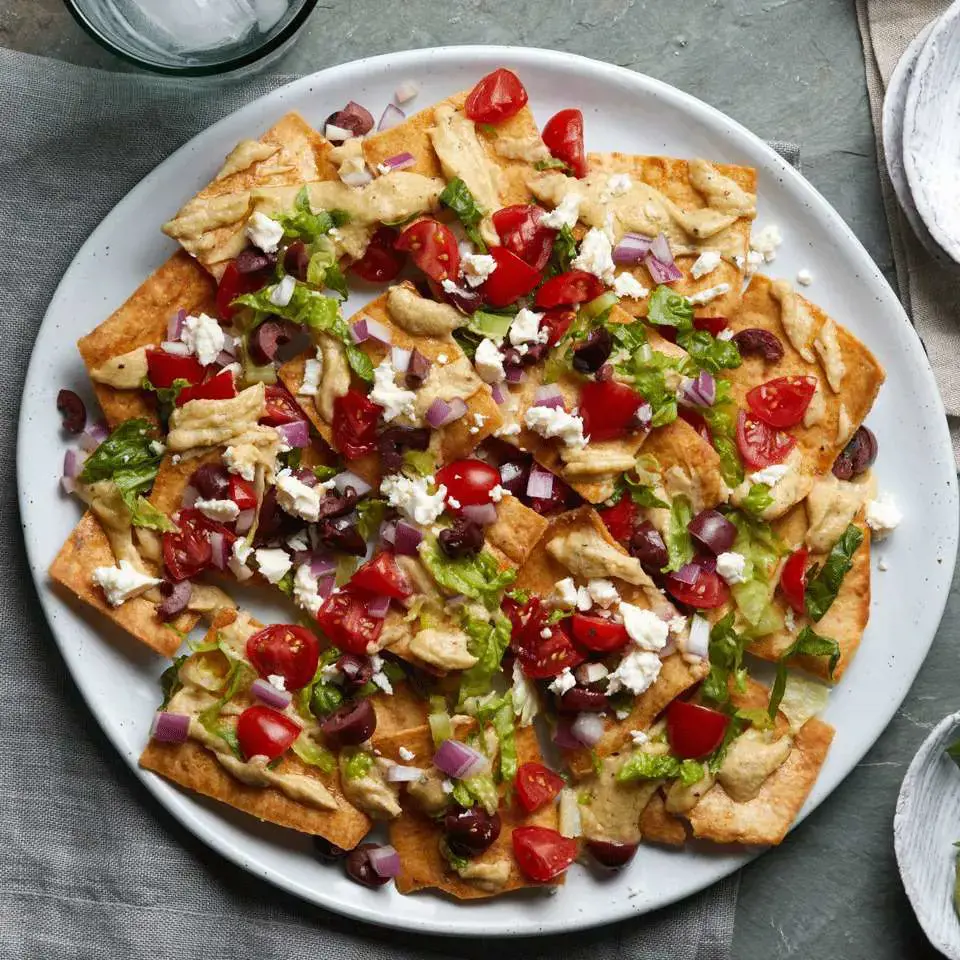
When it comes to packing lunch for college, it can be challenging to find options that are both easy and healthy. However, with a little planning and some simple recipes, you can pack a nutritious lunch that will keep you energized throughout the day. Here are some easy and healthy options for packing lunch to college:
- Mason Jar Salads: Mason jar salads are a great option for packing a healthy and convenient lunch. Simply layer your favorite salad ingredients in a jar, starting with the dressing at the bottom and ending with the lettuce on top. When it's time to eat, just shake the jar to distribute the dressing and enjoy a fresh and delicious salad.
- Wraps and Sandwiches: Wraps and sandwiches are classic lunch options that can be packed with nutritious ingredients. Opt for whole grain bread or tortilla wraps and pack them with lean protein (such as grilled chicken or turkey), fresh vegetables, and a spread of your choice (such as hummus or avocado). These can be made the night before and stored in the fridge for an easy grab-and-go option.
- Pasta Salad: Pasta salad can be a filling and satisfying lunch option that can be prepared in advance. Use whole grain pasta and add in lots of colorful vegetables, such as bell peppers, cherry tomatoes, and cucumbers. You can also include some protein by adding in some cooked chicken or beans. Toss the salad with a light dressing, such as olive oil and lemon juice, and refrigerate it overnight for the flavors to meld together.
- Buddha Bowls: Buddha bowls are a nutritious and versatile option for packing lunch to college. These bowls typically include a combination of grains, protein, vegetables, and a sauce or dressing. Choose a base of quinoa or brown rice and top it with cooked chicken, tofu, or beans. Add in a variety of roasted or steamed vegetables and finish it off with a flavorful sauce, such as tahini or peanut sauce.
- Homemade Snacks: Instead of relying on pre-packaged snacks, try making your own healthy snacks to pack in your lunch. Energy balls made with dates, nuts, and seeds are a great option for a quick and portable snack. You can also make your own trail mix with a combination of nuts, dried fruit, and dark chocolate. These homemade snacks will provide you with sustained energy throughout the day.
- Fresh Fruit and Yogurt: For a simple and refreshing lunch, pack some fresh fruit and yogurt. Choose a variety of fruits that are in season and pack them in small containers or zip-top bags. Pair the fruit with a serving of Greek yogurt for added protein and creaminess. This combination will provide you with a mix of natural sugars and protein to keep you satisfied until your next meal.
In conclusion, packing a healthy lunch to college doesn't have to be difficult or time-consuming. By incorporating these easy and nutritious options into your meal planning, you can enjoy a delicious and satisfying lunch that will fuel your body and mind throughout the day. Remember to choose whole ingredients and pack your lunch with a variety of colors and flavors for a well-rounded meal.
Mistakes to Avoid When Packing a POD
You may want to see also

How can I plan ahead to ensure I have all the necessary ingredients for my packed lunch?
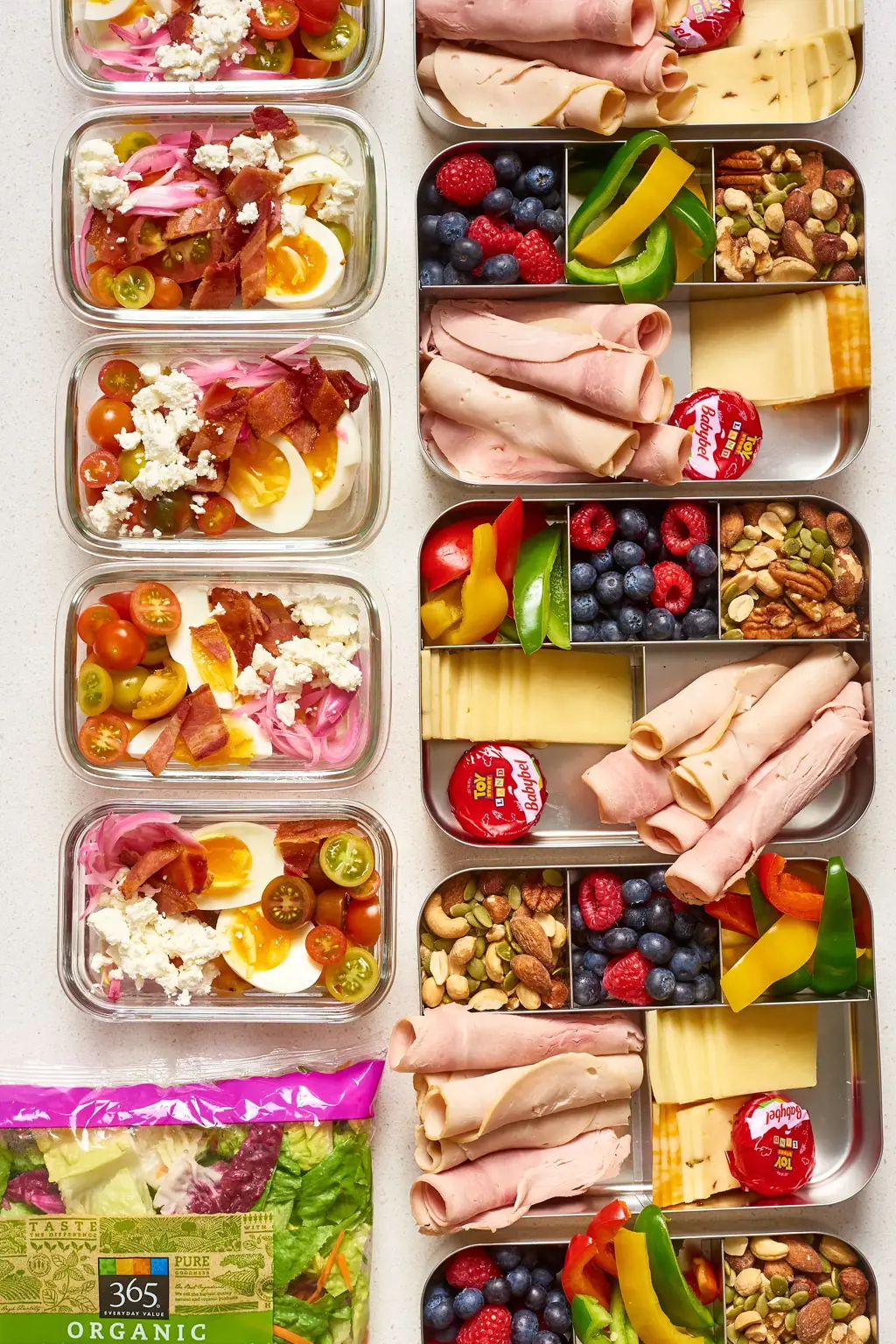
Planning ahead is essential to ensure that you have all the necessary ingredients for your packed lunch. By carefully organizing your shopping list and meal plan, you can avoid running out of supplies and enjoy a delicious and nutritious lunch every day. This article will provide step-by-step guidance on how to plan ahead for your packed lunch, using scientific research, personal experience, and practical examples.
- Determine your nutritional needs: Before planning your packed lunch, it's important to understand your nutritional requirements. Consider factors such as your age, sex, activity level, and any specific dietary restrictions or preferences. This will help you choose ingredients that meet your individual needs and ensure a balanced and healthy lunch.
- Create a meal plan: Once you know your nutritional needs, create a meal plan for the week. This will help you decide what ingredients you need to buy and ensure variety in your packed lunches. Include a mix of protein, carbohydrates, healthy fats, and fruits or vegetables in your meals.
- Make a shopping list: Now that you have your meal plan, make a comprehensive shopping list. Divide the list into different categories such as proteins (e.g., chicken, tofu), grains (e.g., bread, pasta), fruits and vegetables (e.g., apples, spinach), and pantry staples (e.g., olive oil, spices). This will help you stay organized and avoid forgetting any items.
- Check your pantry and refrigerator: Before heading to the grocery store, take inventory of what you already have in your pantry and refrigerator. Cross off any items from your shopping list that you already own. This will prevent you from buying unnecessary duplicates and save you money.
- Stick to nutrient-dense foods: When planning your packed lunch, prioritize nutrient-dense foods that provide a wide range of vitamins and minerals. Include whole grains, lean proteins, fruits, and vegetables in your meals. These foods will keep you satisfied, boost your energy levels, and support overall health.
For example, instead of choosing processed meats like salami or bologna, opt for turkey or chicken breast, which are lower in sodium and saturated fat. Similarly, choose whole grain bread over white bread, as it provides more fiber and complex carbohydrates.
- Prepare in advance: To save time during the week, consider prepping some ingredients in advance. For instance, you can wash and chop fruits and vegetables, cook a large batch of rice or quinoa, or marinate chicken or tofu. Preparing ingredients ahead of time will make assembling your packed lunch quicker and more convenient.
- Store ingredients properly: After purchasing your ingredients, make sure to store them properly to maintain freshness. Fruits and vegetables should be stored in the refrigerator, while dry goods like grains and nuts can be kept in a cool, dry place. Proper storage will prolong the shelf life of your ingredients and minimize waste.
- Pack your lunch the night before: Finally, to ensure that you have everything ready in the morning, pack your lunch the night before. Use reusable containers that are easy to clean and transport. Consider portioning your food into separate containers to keep them fresh and prevent flavors from mixing.
By following these steps, you can effectively plan ahead for your packed lunch and ensure you have all the necessary ingredients. With a little organization and preparation, you can enjoy a tasty and healthy lunch every day, whether you're at work, school, or on the go.
Essential Items for a Perfect Beach Date: What to Pack for a Memorable Day by the Shore
You may want to see also

Are there any specific storage containers or lunchboxes that are recommended for college students?
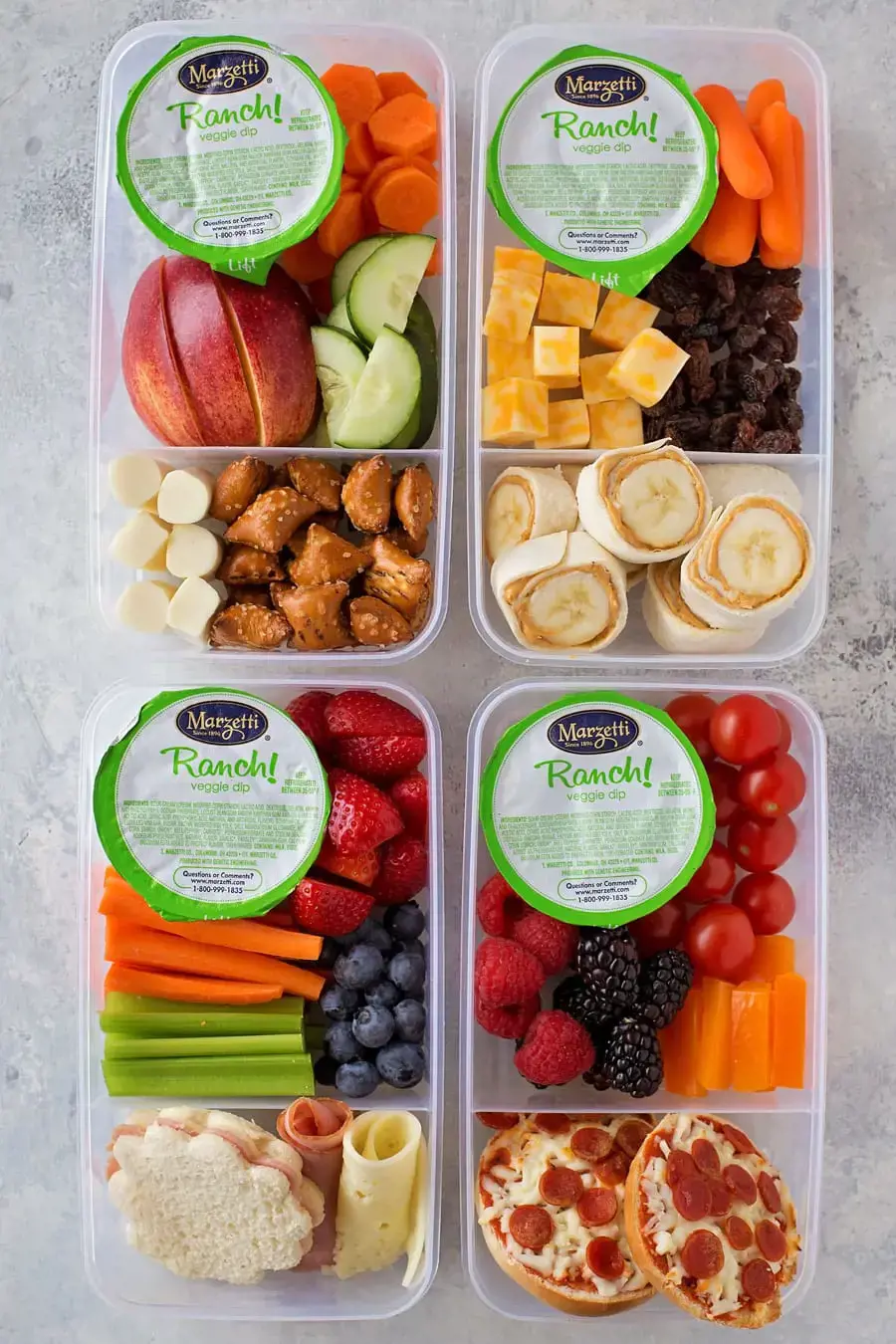
As a college student, it is important to have the right storage containers and lunchboxes to keep your food fresh and organized. With busy schedules and on-the-go lifestyles, having reliable storage options can make meal planning and prepping easier and more convenient. Here are some recommended storage containers and lunchboxes for college students:
- Bento Boxes: Bento boxes are popular among college students for their compartmentalized design, which allows for easy portion control and separation of different food items. These boxes usually come with multiple compartments, making them great for packing a variety of foods such as fruits, vegetables, proteins, and grains. Bento boxes are also reusable, durable, and easy to clean, making them ideal for everyday use.
- Glass Containers: Glass containers are a great option for college students who are conscious about the environment and prefer to avoid plastic. Glass containers are microwave and oven-safe, making them versatile for heating up meals. Additionally, they are stain-resistant, odor-free, and do not absorb flavors, ensuring that your food stays fresh and untainted.
- Insulated Lunch Bags: Insulated lunch bags are a must-have for college students who need to keep their meals hot or cold for an extended period of time. These bags use insulated materials to maintain the temperature of your food, ensuring that it stays fresh and safe to eat. Many insulated lunch bags also come with separate compartments for utensils, drinks, and snacks, making them convenient for carrying all your mealtime essentials.
- Reusable Silicone Bags: Reusable silicone bags are a sustainable and eco-friendly alternative to disposable plastic bags. These bags are made from food-grade silicone, which is non-toxic, leak-proof, and easy to clean. Reusable silicone bags are ideal for storing snacks, sandwiches, and other small food items. They are also freezer and microwave-safe, making them versatile for various food storage needs.
- Stackable Food Containers: Stackable food containers are a practical option for college students who have limited storage space. These containers can be stacked on top of each other, maximizing vertical space in your fridge or pantry. Stackable containers are usually designed to be leak-proof and airtight, keeping your food fresh and preventing any spills or messes. They often come in different sizes, allowing you to easily portion out your meals and snacks.
- Mason Jars: Mason jars are a trendy and versatile option for college students. They can be used for storing salads, overnight oats, soups, and even beverages like smoothies and infused water. Mason jars are durable and have airtight lids, making them a great option for meal prepping and on-the-go meals. They are also easy to clean and can be reused indefinitely.
In conclusion, there are several storage containers and lunchboxes that are recommended for college students. The choice ultimately depends on individual preferences, lifestyle, and specific needs. Bento boxes, glass containers, insulated lunch bags, reusable silicone bags, stackable food containers, and mason jars are all reliable options that can make meal planning and prepping easier and more convenient for college students. Experiment with different options to find what works best for you and your dietary needs.
Essential Items to Pack for a 3-Month Adventure in California
You may want to see also

Are there any foods that I should avoid packing for lunch to college?
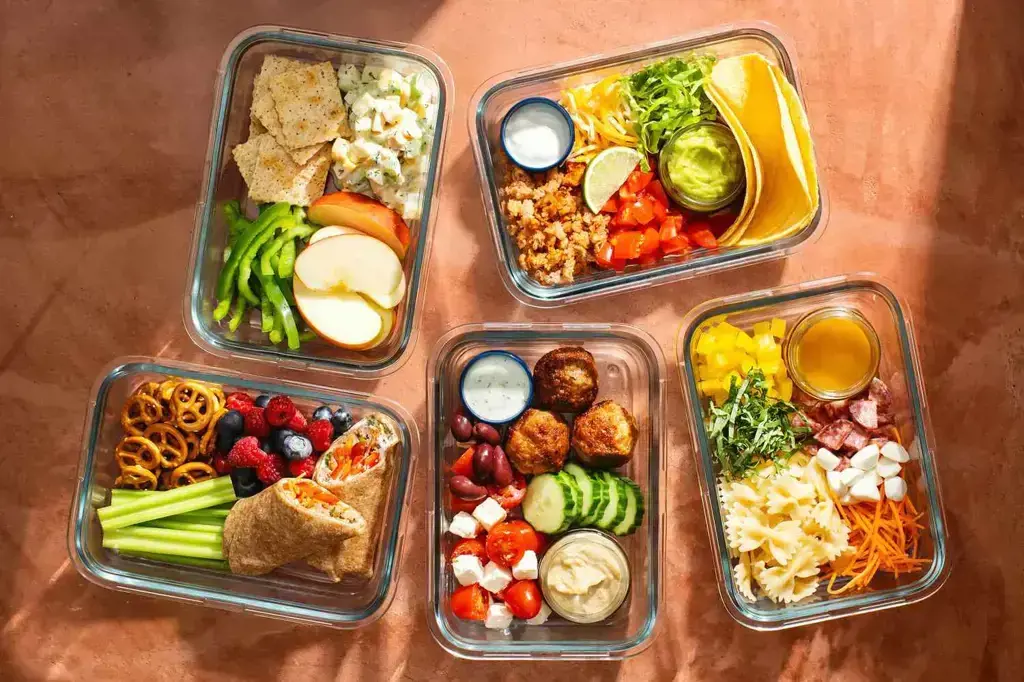
When it comes to packing lunch for college, it is important to make choices that will fuel your body and keep you energized throughout the day. However, there are certain foods that should be avoided in order to maintain your health and well-being. In this article, we will discuss some of the foods that are best left out of your college lunch pack.
- Sugary snacks: While it may be tempting to grab a candy bar or bag of chips for a quick pick-me-up during a long day of classes, these sugary snacks can actually leave you feeling more tired and sluggish in the long run. Instead, opt for healthier options such as fresh fruit or nuts, which will provide a sustained release of energy.
- Fried foods: Fried foods such as french fries, chicken nuggets, and onion rings may be delicious, but they are also high in unhealthy fats and calories. These types of foods can leave you feeling bloated and lethargic, and are not ideal choices for a productive day at college. Instead, choose grilled or baked options to satisfy your cravings while maintaining your health.
- Processed meats: While deli meats such as ham, turkey, and salami are convenient and easy to pack, they are often loaded with preservatives and additives that are not beneficial for your body. These meats are also high in sodium, which can lead to bloating and water retention. Instead, try opting for freshly cooked chicken or turkey breast for a healthier and more nutritious option.
- High-sugar beverages: Many students tend to reach for sugary drinks such as soda or energy drinks to keep them alert and focused during long lectures. However, these beverages are typically loaded with empty calories and can lead to weight gain and other health issues. Instead, choose water, herbal tea, or naturally flavored waters for a refreshing and hydrating drink option.
- Processed snacks: Snacks such as potato chips, pretzels, and cookies may be convenient and tasty, but they are often high in unhealthy fats, sodium, and added sugars. These types of snacks can leave you feeling unsatisfied and craving more unhealthy foods. Instead, opt for healthier snack options such as whole grain crackers, granola bars, or air-popped popcorn.
By avoiding these types of foods in your college lunch pack, you will be making choices that will benefit your overall health and well-being. Remember to prioritize fresh fruits and vegetables, lean proteins, whole grains, and healthy fats to ensure that you are properly fueling your body for success. Experiment with different recipes and meal prep ideas to keep your lunches interesting and enjoyable while still maintaining a nutritious diet.
Essential Items for Women Traveling to India
You may want to see also

What are some quick and budget-friendly lunch ideas for college students?
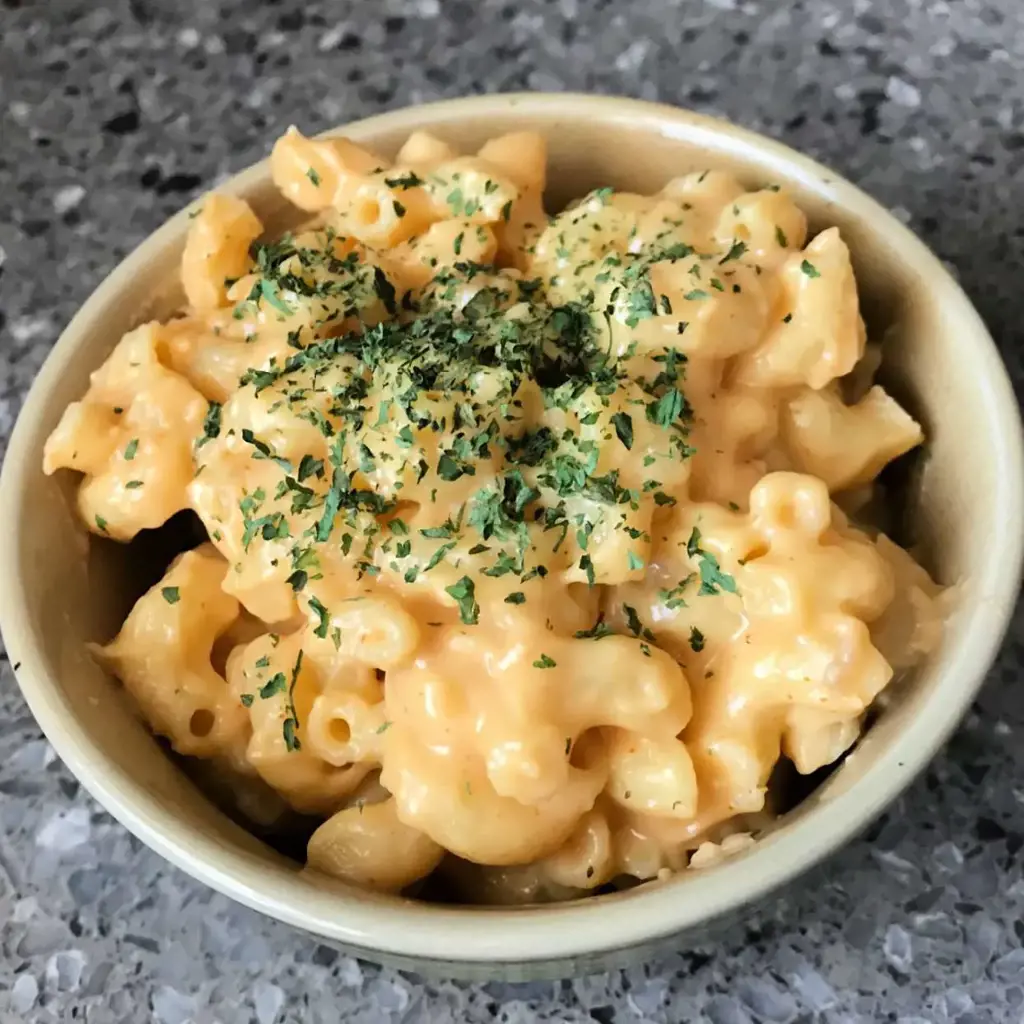
College students are often short on time and money, making it challenging to find quick and budget-friendly lunch options. However, with a little planning and creativity, it is possible to enjoy healthy and affordable meals. In this article, we will discuss several lunch ideas that are perfect for college students.
- Sandwiches: Sandwiches are a classic and convenient lunch option. You can customize them based on your preferences and the ingredients you have on hand. Choose whole grain bread or wraps as a healthier alternative. Some popular options include turkey, chicken salad, tuna, and veggie sandwiches. Add lettuce, tomatoes, onions, and your choice of condiments for extra flavor.
- Pasta salads: Pasta salads can be made in advance and enjoyed throughout the week. Cook a batch of pasta and mix it with your favorite vegetables, such as cucumbers, bell peppers, cherry tomatoes, and olives. Toss with a dressing of your choice, such as Italian or balsamic vinaigrette. For added protein, you can include beans, grilled chicken, or cubed cheese.
- Stir-fries: Stir-fries are quick and versatile meals that can be made with a variety of ingredients. Start by sautéing your choice of protein, such as chicken, tofu, or shrimp, with vegetables like broccoli, carrots, and bell peppers. Season with soy sauce, garlic, and ginger for added flavor. Serve over rice or noodles for a satisfying meal.
- Quesadillas: Quesadillas are a simple and tasty lunch option that can be made in minutes. Heat a tortilla in a pan and fill it with cheese, vegetables, and protein, such as chicken or beans. Fold the tortilla in half and cook until the cheese is melted and the tortilla is crispy. Serve with salsa, guacamole, or sour cream.
- Soup and salad: This combination makes for a filling and nutritious lunch. Prepare a big pot of vegetable soup using ingredients like onions, carrots, celery, beans, and broth. Pair it with a side salad made with mixed greens, cherry tomatoes, cucumbers, and your choice of dressing. You can also add protein to the salad, such as grilled chicken or chickpeas.
- Mason jar salads: Mason jar salads are a convenient way to prep your lunch in advance. Layer your ingredients in a jar, starting with the dressing at the bottom, followed by sturdier vegetables like cucumbers and carrots, and ending with leafy greens on top. When you're ready to eat, shake the jar to mix everything together. This method keeps the ingredients fresh and ensures that the dressing doesn't make the salad soggy.
- Leftovers: Don't underestimate the power of leftovers! Cook extra portions of your dinner and pack them for lunch the next day. This not only saves time but also reduces food waste. Make sure to store leftovers in airtight containers in the fridge to keep them fresh.
- Meal prepping: Spend some time on the weekends to plan and prepare your meals for the week. Cook a large batch of grains, such as rice or quinoa, and protein, such as grilled chicken or roasted tofu. Also, chop up your vegetables and fruits and store them in separate containers. This way, you can easily assemble a balanced meal each day without much effort.
By incorporating these quick and budget-friendly lunch ideas into your routine, you can save money, eat healthier, and have more time for other activities. Get creative with your ingredients and experiment with different flavors to keep your lunches exciting and enjoyable. Remember to stay organized and plan ahead to make the most of your limited resources.
Essential Items to Pack for Traveling to India in July
You may want to see also
Frequently asked questions
Some healthy lunch options for college include salads with lean protein such as chicken or tofu, whole grain wraps with vegetables and hummus, quinoa bowls with roasted vegetables and avocado, and vegetable stir-fry with brown rice.
To save money on packed lunches for college, you can buy ingredients in bulk and portion them out, cook meals in large batches and freeze individual portions, use reusable containers and water bottles instead of disposable ones, and pack leftovers from dinner the night before.
To ensure your packed lunch stays fresh until lunchtime, you can use an insulated lunch bag or cooler with ice packs, pack foods that don't need to be refrigerated like whole fruits and vegetables, use individual containers for dips or dressings instead of pre-mixing them, and assemble sandwiches or wraps right before eating to prevent them from getting soggy.
Some easy, no-cook lunch options for college include salads with pre-cooked chicken or canned tuna, whole grain crackers with cheese and sliced vegetables, yogurt parfaits with granola and berries, and deli meat roll-ups with lettuce and mustard.







